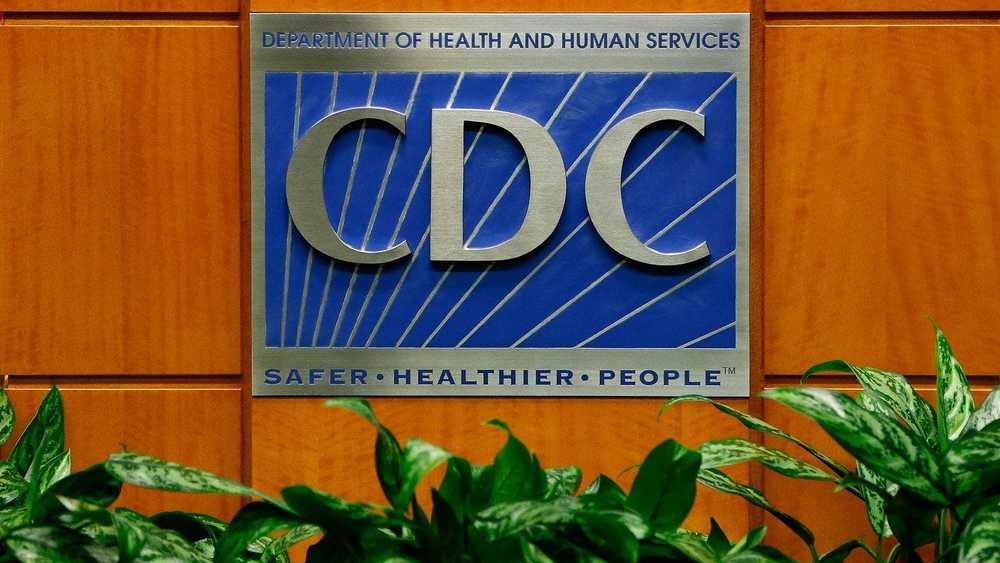Page 8153
Nov 14, 2019
HyperStealth Biotechnology Creates Real ‘Invisibility Cloak’
Posted by Shailesh Prasad in category: biotech/medical
Nov 14, 2019
The ‘post-antibiotic era’ is here: Drug-resistant ‘superbugs’ sicken 2.8M and kill 35K each year, CDC says
Posted by Genevieve Klien in category: biotech/medical
A new CDC report sets a baseline of infections and deaths from antibiotic-resistant germs and outlines strategies to slow drug-resistant infections.
Nov 14, 2019
Sleep duration predicts death risk in diabetes and hypertension
Posted by Genevieve Klien in category: biotech/medical
An analysis of data from 1,654 people suggests that sleep duration may help predict early death risk in people with type 2 diabetes or hypertension.
Nov 14, 2019
Curiosity rover reveals “mind-boggling” oxygen swings on Mars
Posted by Genevieve Klien in category: space
The study of Mars is a constant exercise in problem-solving, and NASA scientists have just been served up a doozy. Data from the Curiosity rover positioned within the planet’s Gale Crater has revealed wild seasonal swings in oxygen levels, something mission scientists neither expected or are able to explain.
This perplexing piece of intel comes courtesy of Curiosity’s Sample Analysis at Mars (SAM) tool, an onboard laboratory that has been sucking in the air over the Gale Crater for analysis over the course of three Martian years (almost six Earth years). This has enabled the team to piece together the composition of the planet’s thin atmosphere, with CO2, nitrogen, argon, carbon monoxide and oxygen all part of the mix.
The concentrations of these gases increase and decrease as the weather changes on Mars, as the icy winters lower air pressure across the planet and the summer then raises them again. This leads to regular patterns of concentrations of gases like nitrogen and argon, and in examining the latest data, the scientists expected to see similar trends at play for oxygen.
Nov 14, 2019
In Case of Apocalypse, Open This Arctic Code Vault
Posted by Derick Lee in categories: business, existential risks

In this episode of “Hello World,” Ashlee Vance travels to Svalbard — an archipelago located at 80 degrees north — to participate in some doomsday preparation with GitHub CEO Nat Friedman.
#HelloWorldBloomberg #Svalbard
Continue reading “In Case of Apocalypse, Open This Arctic Code Vault” »
Nov 14, 2019
Parkinson’s Gut Bacteria Studies Differ in Findings, Methods, Review Says
Posted by Paul Battista in categories: biotech/medical, neuroscience
Studies on gut bacteria in Parkinson’s disease differ in their findings and important methodological details, according to a new review that highlights these differences and proposes strategies to mitigate them in the future.
The study, titled “ Increasing Comparability and Utility of Gut Microbiome Studies in Parkinson’s Disease: A Systematic Review,” was published in the Journal of Parkinson’s Disease.
Although Parkinson’s is often thought of as a disorder of the brain, the gut likely plays an important role in the disease, but it has only been seriously studied in recent years. A number of studies have recently focused on how the gut microbiome — the bacteria that live inside the intestines — might impact Parkinson’s.
Theoretically, the universe may be riddled with tunnels through space and time. Two scientists have now proposed a way to detect the existence of a cosmic escape hatch.
Nov 14, 2019
Shape of the universe: study could force us to rethink everything we know about the cosmos
Posted by Paul Battista in category: space
No matter how elegant your theory is, experimental data will have the last word. Observations of the retrograde motion of the planets were fundamental to the Copernican revolution, in which the sun replaced Earth at the centre of the solar system. And the unusual orbit of Mercury provided a spectacular confirmation of the theory of general relativity. In fact, our entire understanding of the universe is built on observed, unexpected anomalies.
Nov 14, 2019
Toxic gut bacteria make alcohol-triggered liver disease more deadly
Posted by Paul Battista in category: biotech/medical
For a heavy drinker whose liver has been destroyed by alcohol, an organ transplant is often the only realistic option. But because of donor liver shortages and rules that withhold them from people who have not shed their alcohol addiction, many go without. Tens of thousands die from alcoholic liver disease each year in the United States—and some go downhill much faster than others. Now, scientists have found a reason for this disparity: a toxin produced by some strains of a common gut bacterium. Working in mice, they have also tested a potential therapy, based on bacteria-destroying viruses found lurking in the sewer.
Why some drinkers with liver disease fare much worse than others “has always been a conundrum,” says Jasmohan Bajaj, a gastroenterologist and liver specialist at Virginia Commonwealth University in Richmond. The bacterium Enterococcus faecalis offers an explanation, Bernd Schnabl, a gastroenterologist at the University of California, San Diego (UCSD), School of Medicine, and colleagues report this week in Nature. In fecal samples from patients with alcoholic liver disease, levels of it were 2700 times higher than in nondrinkers, although the mere quantity didn’t correlate with a person’s outcome. Instead, the researchers identified a cell-destroying toxin called cytolysin produced by select strains of E. faecalis as the likely reason that some patients with alcoholic liver disease had severe symptoms.
Fewer than 5% of healthy people carry the toxinmaking strains, but the group found them in 30% of the people hospitalized with alcoholic liver disease whom they tested. And those patients had a much higher mortality rate within 180 days of admission—89% of the cytolysin-positive patients died compared with only 3.8% of the other patients. “Cytolysin is a factor that really drives mortality and liver disease severity,” Schnabl says.

















